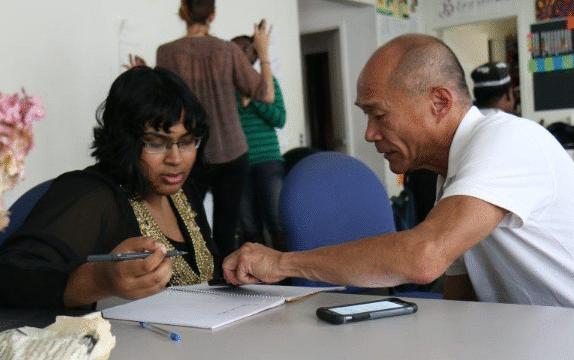Creating an inclusive classroom is one of the most rewarding
and meaningful goals a teacher can pursue. At its heart,
inclusivity means making sure every student feels welcome,
respected, and capable of learning. It goes beyond simply accommodating differences; it is about celebrating them and building a community where diversity becomes a strength rather than a barrier. Teachers play a crucial role in shaping this environment, and the process of fostering inclusivity can enrich the learning journey for both educators and students alike.
An inclusive classroom recognizes that children come with different experiences, abilities, backgrounds, and learning styles. Some may learn best through visual aids, while others thrive in hands-on activities. Some may come from families that speak multiple languages, while others may face social or emotional challenges. The teacher’s task is not to make every student identical but to create pathways for each child to succeed in their own way. This guide explores practical approaches to building inclusive classrooms, offering ideas that teachers can adapt to their own unique settings.
The first step in creating an inclusive environment is building a foundation of respect. Students must understand that their classroom is a safe space where everyone’s contributions matter. Teachers can model this behavior by showing kindness, patience, and openness when students share their thoughts. A culture of respect also means addressing hurtful comments or exclusionary behaviors quickly, ensuring that students know kindness is the standard expectation. Over time, this approach fosters empathy, which is key to building friendships across differences.
Curriculum design also plays a powerful role in promoting inclusivity. When students see themselves reflected in the material they study, they feel valued and understood. Literature that features diverse characters, history lessons that include multiple cultural perspectives, and examples that highlight contributions from people of varied backgrounds all help create this connection. At the same time, inclusive curriculum gives all students a broader worldview, encouraging them to appreciate perspectives beyond their own.
Teaching methods can also be adapted to include all learners. Differentiated instruction is one approach that allows teachers to present material in varied ways so that each student can engage meaningfully. For example, a science lesson might include written explanations, visual diagrams, and hands-on experiments. A history project might allow students to choose between writing an essay, creating a presentation, or designing an artistic display. By offering choices, teachers empower students to use their strengths and engage with learning in ways that suit them best.
Technology can further support inclusivity in modern classrooms. Digital tools allow teachers to provide audio versions of texts, interactive quizzes that adjust to different ability levels, or translation options for students still developing language skills. However, inclusivity does not rely solely on technology. A teacher’s flexibility, creativity, and willingness to listen often make the greatest difference. Even small changes, such as arranging desks in circles to promote discussion rather than rows that separate students, can create a more welcoming environment.
Building an inclusive classroom also requires attention to emotional well-being. Teachers can integrate social and emotional learning activities that help students understand themselves and others. Exercises that encourage teamwork, reflection, and empathy can reduce misunderstandings and conflicts. When students learn how to express their feelings and listen to others, they become more equipped to support one another. Teachers who check in regularly with students, offering encouragement and guidance, create a sense of belonging that motivates children to participate actively in class.
Another important aspect of inclusivity is involving families. Parents and guardians bring valuable insight into their child’s needs, strengths, and cultural traditions. When teachers maintain open communication with families, they can better support students and ensure that home and school environments work together. Family engagement can take many forms, from newsletters and parent-teacher meetings to cultural events that celebrate the diversity of the school community. When families feel included, children are more likely to feel that their identity is respected.
Teachers also benefit from professional growth in inclusive practices. Ongoing training, peer collaboration, and self-reflection help educators strengthen their ability to support diverse learners. Attending workshops, reading research, and observing colleagues can introduce new strategies and fresh perspectives. Just as students thrive in inclusive classrooms, teachers thrive in supportive professional networks where they can share challenges and successes.
One common concern teachers face is managing the balance between addressing individual needs and maintaining whole-class progress. This is where careful planning and flexibility become essential. Teachers can design activities that allow for group learning while still incorporating individualized support. For instance, small-group projects can pair students with complementary strengths, allowing them to learn from one another. Classroom routines, when consistent and predictable, also help all students feel secure and able to focus on learning.
It is important to remember that inclusivity is not about perfection. Teachers will face challenges, and adjustments will be necessary. What matters most is the commitment to continuous improvement and the belief that every student deserves the opportunity to learn. Students notice when their teachers put in effort to include them, and this effort often inspires students to be more inclusive themselves. Over time, the classroom becomes not just a place for academic learning but also a community where values of respect, empathy, and cooperation flourish.
Inclusive classrooms prepare students for life beyond school. In the real world, they will interact with people from different cultures, with varied abilities, and with unique perspectives. When students grow up in inclusive learning environments, they develop the skills needed to collaborate, communicate, and innovate. These skills are not only beneficial for their careers but also for building a society where diversity is embraced.
Teachers embarking on the journey of creating inclusive classrooms should celebrate small victories along the way. Every time a student feels comfortable enough to share their opinion, every moment of kindness between classmates, and every project that highlights multiple voices is a step toward success. The process is ongoing, but each effort brings lasting impact.
In conclusion, inclusive classrooms are built through respect, thoughtful curriculum, flexible teaching methods, emotional support, family engagement, and professional growth. Teachers hold the key to unlocking each child’s potential by creating a learning space where everyone feels valued. The rewards of this work are profound, shaping not only individual student outcomes but also the collective spirit of the classroom. As teachers commit to inclusivity, they contribute to a brighter, more compassionate future where education truly belongs to all.






